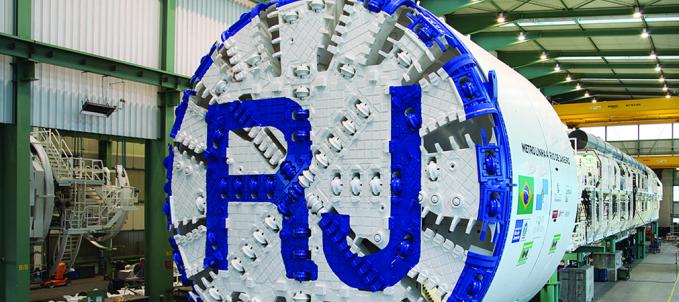Collaboration in the AECO market - The problem and the solution

Collaboration is becoming increasingly fashionable. Why is this? Is it really just a “fad” to promote collaboration?
I defy anyone to come up with a single branch of society that depends exclusively on a single individual. It doesn't. We are connected beings and we are all interconnected. We live in a society. That's a fact. But what is a society? Objectively speaking, it's a group of beings who live together in a gregarious state and in mutual collaboration. And what is “gregarious”? That they tend to live together. And mutual collaboration? That benefits everyone involved.
If we organize ourselves to live like this, it would be good if this coexistence were harmonious, peaceful and of benefit to all... but we see in everyday life that this is not exactly how things work. It is not the aim of this text to philosophize about why this is not the case, who is to blame or why things are the way they are. The main aim is to point out that collaboration is important and can be considered the foundation on which all successful work rests.
According to Martin Luther King Jr, “we cannot walk alone. And since we cannot walk alone, we must learn to walk together”. Marie Curie, meanwhile, reflected on the success of collaborative relationships: “Collaboration is the key to success. When we work together, we can achieve things that would never be possible alone.”
An interesting concept with origins in Tibetan Buddhism deals with a theme known as “The Heresy of Separateness”, which, briefly applied to the environment and human relations, can be understood as the false belief that human beings are disconnected from nature and other human beings.
Another interesting concept is found in Africa: Ubuntu. This is a term from the Zulu and Xhosa cultures that means: “I only exist because we exist”. These peoples believe that happiness is achieved through cooperation and collaboration, because everyone is much happier in harmony.
And what does a Baptist pastor / political activist, a two-time Nobel Prize winner, Tibetan and African concepts of collaboration have to do with Engineering?
Pretty much everything
A definition found in the dictionary: collaboration “...is work done in common with one or more people...”. In other words, this is the reality of our market.
The Ubuntu philosophy, for example, finds parallels in the corporate environment, especially in high-performance teams. Professional athletes from different sports say that a collaborative spirit is essential for achieving extraordinary results. In relay races, each athlete depends on the other's performance to win. This principle can be applied to the AECO market, where team interdependence and mutual trust are fundamental to the success of any enterprise.
Collaboration has several layers. The most obvious is that which takes place on a day-to-day basis within each group. But the groups also collaborate with each other. After all, it's impossible to plan something that hasn't been minimally designed; just as it's impossible to manage the operation of an asset without it being properly built. Yes, it's obvious. What is not so obvious, however, is the fact that the absence of true collaboration between the AECO production chain as a whole generates inefficiencies and waste.
That's why BIM has been talked about so much. The parametric models, simulations, 3D visualizations and all the enchantment generated by the use of cutting-edge technologies attract the attention of the layman and the uninitiated. But the great value of adopting BIM as the basis for cutting-edge digital engineering lies in the possibility of collaboration and information management. It is no coincidence that there is so much talk of information classification and interoperability. Of course! After all, information needs to be well organized so that it can flow unrestrictedly between the various “players”, regardless of the platform on which this information will be accessed / consulted / used. The adoption of parametric modeling allows information to evolve over time: from simple ideas and concepts, to information as sophisticated as desired, flowing from stakeholder to stakeholder, like a baton is passed in athletics, in the 4x100m relay race. But collaboration goes beyond simply passing information from hand to hand.
From a project management perspective, we see that integration between groups goes beyond simply sharing information. It's about creating an ecosystem in which each part understands its contribution to the whole. A collaborative mindset is essential to avoid organizational silos and ensure that decisions made at one stage of the process do not jeopardize subsequent stages. This holistic vision is what turns projects into real successes.
In addition to the technical advantages offered by BIM, its implementation requires a cultural change in organizations. In the successful operations of different companies, it can be seen that this transformation begins with valuing people and teamwork. BIM is not just a tool; it represents a collaborative philosophy that requires clear communication, strategic alignment and trust between stakeholders. When implemented well, it can be the catalyst for a revolution in the way we design and build.
Although BIM is widely recognized as a powerful tool for promoting collaboration in the AECO market, there are other methodologies that also place collaboration at the heart of their practices. Advanced Work Packaging (AWP), Lean Construction and Agile Methods are examples that share a common principle: integration and joint work between all parties involved. The essence of these methodologies lies not only in their specific techniques, but in their ability to create an environment where the different stakeholders work in alignment towards shared objectives. Regardless of the name or the approach adopted, the real value lies in the collaborative mindset that eliminates silos, promotes trust and seeks optimized results for everyone involved. Success depends on synchronization and harmony between the participants.
Collaboration starts with understanding that each part of the production system has its own importance, value and need to be present in the process. You can't be collaborative and self-centered; these are antagonistic and mutually exclusive concepts. A good team manager promotes synergy, which is precisely the functioning of the whole in harmony. Likewise, the premise must be to promote the conditions in which everyone involved can do their part and ensure that these parts talk to each other at intelligible levels and serve the main beneficiary: the end customer.
Ultimately, collaboration is not just a solution to the challenges of the AECO market; it is an intrinsic value that defines our ability to innovate and thrive. Whether in engineering, sport or any other sector, the best results come when individuals work together with goals and synergies. As professionals, we must adopt this champion mentality, fostering collaborative environments that increase the performance and satisfaction of everyone involved. Only in this way can we achieve true success in a project, not because one area or company involved achieved results in line with its individual objectives, but because all parties performed above average and in line with mutual objectives.
It's natural that there will always be resistance to change and a certain distrust of cutting-edge technologies and methodologies. However, once the benefits are seen in practice, such as better communication, customer satisfaction (internal and external), costs under control, rework avoided and greater synergy between those involved, the greater the commitment to collaborative practices.
Perhaps the greatest challenge of our times is to demonstrate that collaborating is better than competing; that there is no such thing as a “win-win” relationship where ego rules; and that collaboration is both the challenge to be overcome and the solution itself.
Authors: Cristiano Silva and Israel Murat








